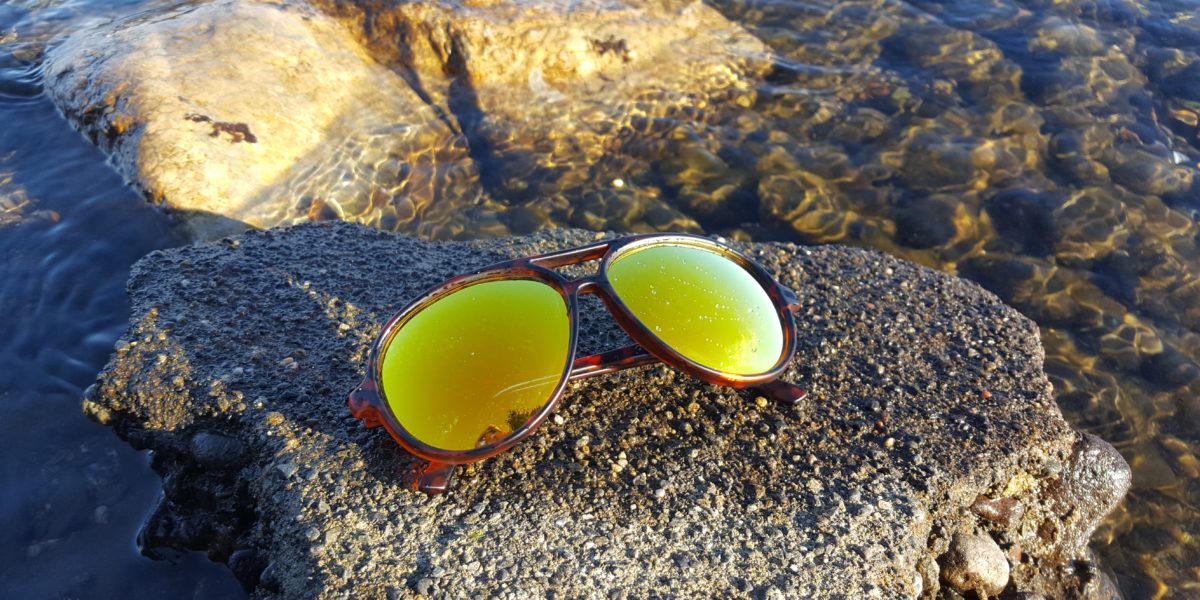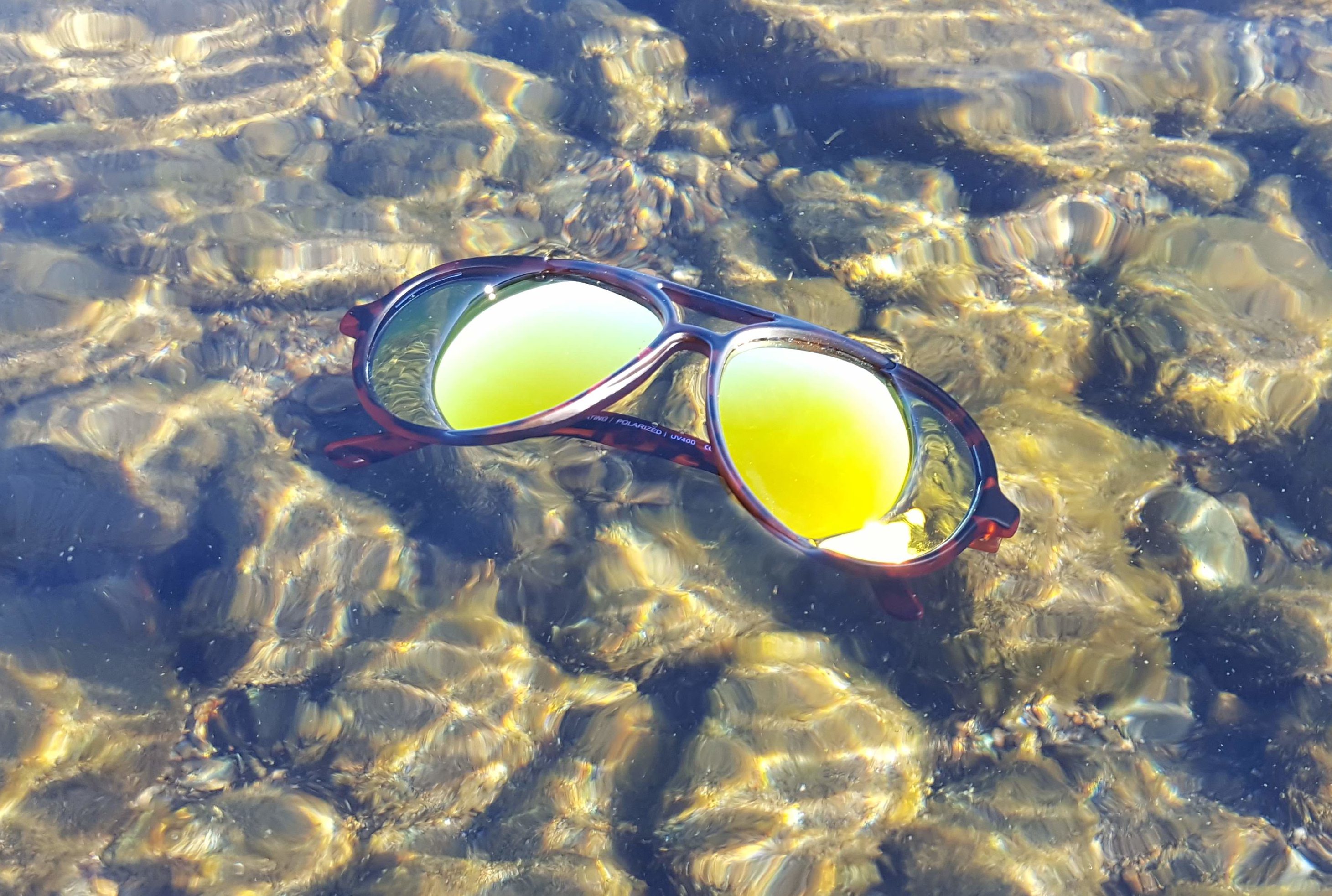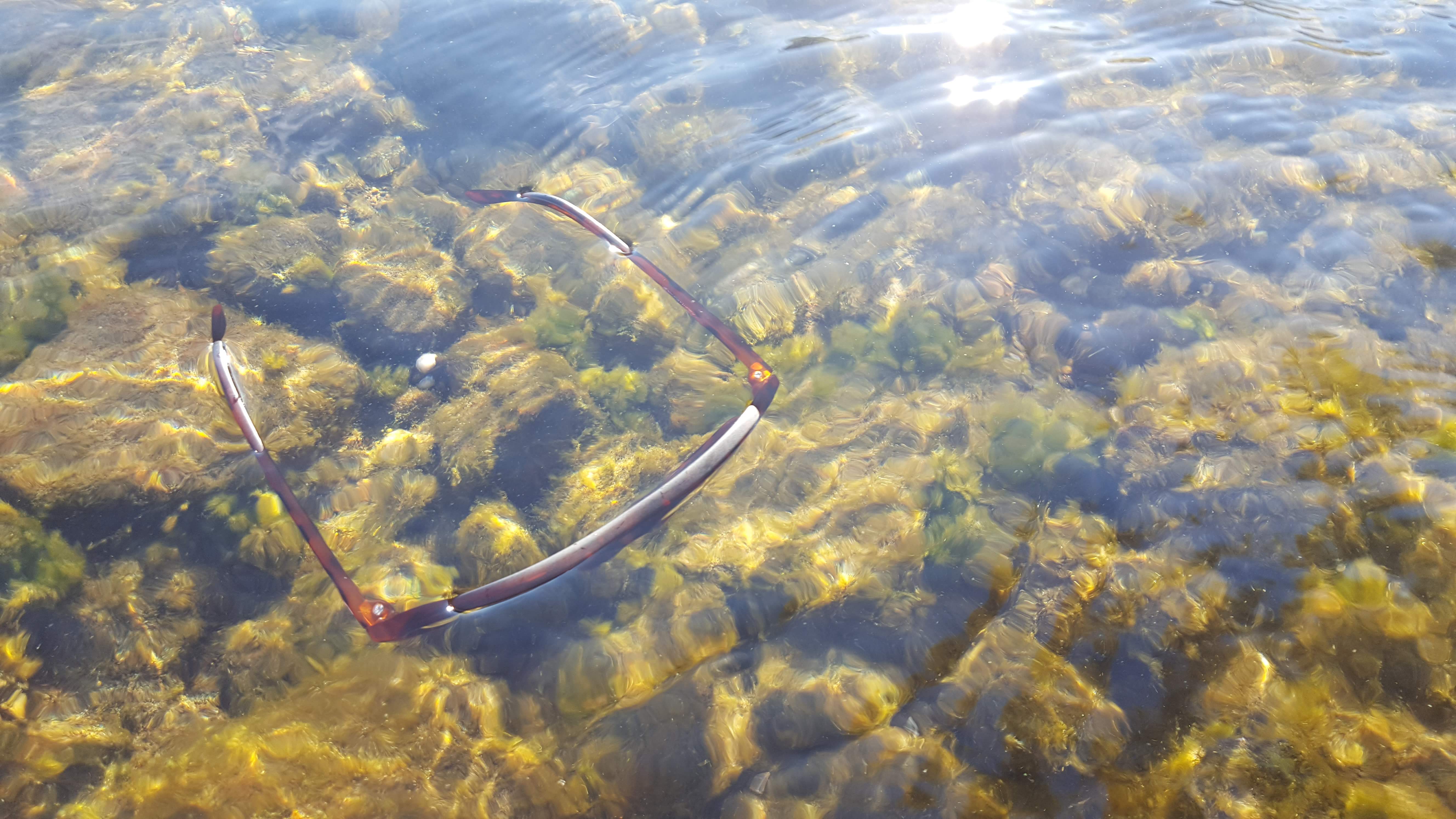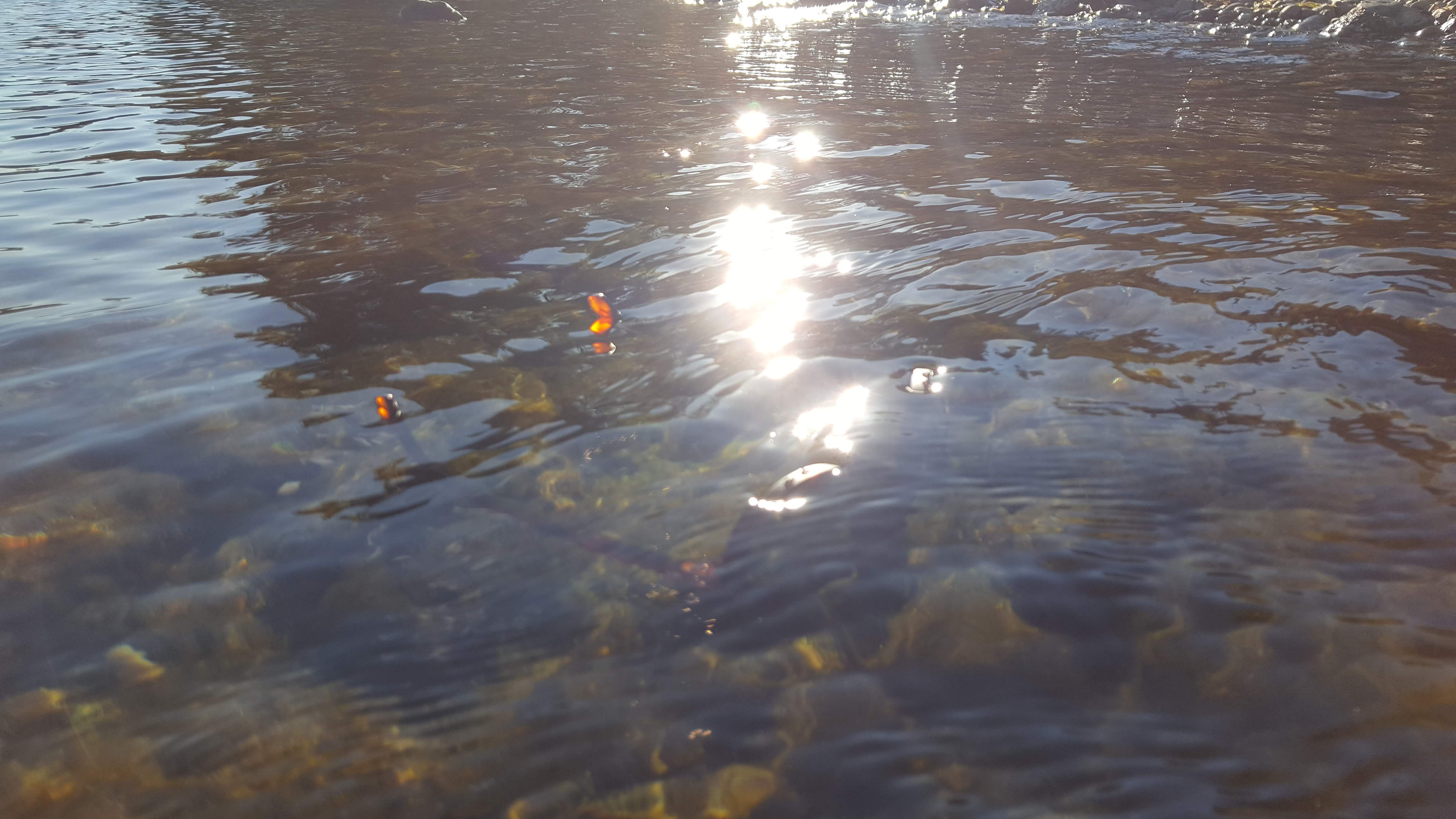
Rheos Floating Sunglasses is a new entry to the booming shades market providing niche alternatives to the mainstream-dominated brand space. Founded in Atlanta in 2016, and now headquartered in Charleston, Rheos’ caters to the “water junky” sports crowd by focusing on its unique attribute: shades that float. Floating sunglasses is not an untapped market. A quick search reveals a number of competitors in this space, so for this review, I’m examining how Rheos stacks up as sunglasses in general and in the floating sunglasses category.
Do They Float? Functionality (9/10)
Yes. Rheos Sunglasses do indeed float. Though I didn’t have the opportunity to give these a proper test on a paddleboard, I tossed my pair of Rheos into Lake Washington a couple of times to see how they faired. And yes, they float, but not as well as I expected they might. When the arms are closed, my Rheos shades floated on par with expectations, sitting significantly above the surface. But when the arms are extended, as if they just fell off my face, Rheos shades are more submerged than I had expected. Depending on the color, even as floating shades, they may be challenging to relocate. They absolutely do float, which is significant compared to many of the sporty frames out there that would sink to the bottom of the ocean. Further, when pushed down further, Rheos return to their position near the surface. As the photos below illustrate, they can be a bit hard to see depending on frame color and position.

With arms closed, Rheos is easy to locate on the surface of the water and float noticeably above it.

Right side-up with arms out, Rheos floats well and is more submerged.

When upside down with arms out, its difficult to locate these shades, especially with the brown pair that I have (which are probably the worst case scenario for testing these out). A bright yellow pair of shades would be easy to locate.
Now, I haven’t tried any of the other floating shades out there, and Rheos may be the best floaters in the world. They do float and do so well, but when I imagined floating shades, I expected these to pop out of the water. They do the job but require an adjustment of expectations.
Comfort/Fit (9/10)
Rheos provided a couple of pairs of shades for me to test out — a pair of Palmettos and a pair of Bahias. While I really liked the Bahias’ purple lenses, the frame was a bit too large for my small head (though they’d likely fit an average head) and I focused most of my time on the Palmettos. The Palmettos were still a bit bigger than I’d prefer from an aesthetic standpoint, but from a comfort standpoint, I enjoyed the experience. (I will note that the Bahias had holes in the arms for a head strap to provide extra security, which I really appreciated.)
The only knock against Rheos is that they’re not as comfortable as some of the shades I’ve tested with rubber nose plates. That said, they’re so light that there is practically no pressure on my nose to warrant a rubber nose plate.
Rheos shades are very noticeably light — 20-30% lighter than average according to Rheos. Rheos noted that the lightness comes from the material used on their frames which is more porous on a molecular level compared to standard polycarbonate frames. The Ultralight TPX™ frame gives Rheos their buoyancy while maintaining a modern look. These shades are so light that it’s easy to forget that you’re wearing a pair were it not for their excellent polarization quality (more on that below). Compared to other sunglasses on the market, I’m not convinced that lightweight equals better, even in competitive sports. That said, despite their light frame, and repeated shake tests, my Palmettos stuck to my face well.
I also have plenty of experience with wearing a heavier frame that puts enough pressure on my head over time that it becomes painful. I have no worry about pain when it comes to wearing a pair of Rheos. They feel comfortable on your head and even fit well under a motorcycle helmet (not something I can say about a lot of shades). Rheos can be worn for an extended period of time without any issues whatsoever.
I’ve gone back and forth about how I feel about the light Rheos frames. My first instinct was to think the light frame meant a cheaper, lower quality product, but with Rheos I don’t think that’s the case. I do see the value of having a lightweight frame on the water, underneath a motorcycle helmet or while cycling or skiing. Considering the context of use, I’m behind the lightweight feel.
Lenses (10/10)
This is where I was really impressed with Rheos. Rheos’ lenses are excellent, especially for the price. These polarized lenses boast 100% UV protection, a hydrophobic finish, anti-fog, and anti-scratch protection. After taking a dip in Lake Washington there wasn’t really any water residue once they had dried. Further, they’ve been noticeably scratch resistant having carelessly tossed them into my bag and pocket many times of the past few months.
But what really takes the cake here is how clear things look through Rheos lenses. They offer a high-quality polarization that usually can’t be found in a pair of sunnies at this price point.
Style (7/10)
I’m a fan of the Palmettos. They have a distinct aviator-style that I find to be a unique offering amidst a sea of same-old shades. But with exception of the Wyecreeks, Rheos’ styles are generic. A saving grace is an offering of colorful lenses on otherwise average looking frames. I’d like to see more uniqueness in Rheos’ offerings that make me think less about the utility of the shades and more about how cool a pair of sunglasses looks. In discussion with the company, they are bought-in on a philosophy of doing more than just utility, and I suspect in the coming years they may branch out their styles.
Durability (9/10)
So far so good. Rheos are standing up well to daily use, misuse and being regularly tossed into the lake. I worry that the lightweight frames risk being snapped or crushed more easily than another frame. There’s a very delicate feel to the shades that I’m trying to get over.
Price (8/10)
At $49.99 you’re getting a niche pair of sunglasses that float, and have way above average lenses. If being on the water is something you do regularly, you can’t go wrong with Rheos, especially if you’re a fan of one of their frames. Compared to other floating sunglasses, they’re middle of that pack price-wise, with a similar offering from Waves at $40. With that considered, it really comes down to the style you’re after. In the grand scheme, $49.99 is a good price for a good pair of sunglasses, but you’re paying for utility above all else.
Rheos isn’t a throw-away pair of sunglasses. They’re a step above, and for the price, you do get a lot more with such high-quality lenses.
Overall (8/10)
If you’re a regular kayaker, SUPer, or if you routinely lose sunglasses in the water, Rheos are a good investment. You’ll get a very high-quality lens at a comparably affordable price and you’re going to be a lot less likely to lose your shades. The noticeably lightweight frame also feels great on my face, and under a helmet. You can wear Rheos for an extended time without any pain.
If you’re a fan of the styles offered, then you’ve got a real winner. As a niche, utility pair of sunnies, Rheos Floating Sunglasses are a great option for someone who spends a lot of time in the sun or on the water.








Comments Policy: At Skyd, we value all legitimate contributions to the discussion of ultimate. However, please ensure your input is respectful. Hateful, slanderous, or disrespectful comments will be deleted. For grammatical, factual, and typographic errors, instead of leaving a comment, please e-mail our editors directly at editors [at] skydmagazine.com.